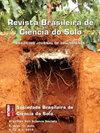Solimões/亚马逊河流域不同土地利用方式下洪泛区土壤化学特征
IF 2
4区 农林科学
Q3 SOIL SCIENCE
引用次数: 1
摘要
关于农业系统对巴西亚马逊地区土壤影响的大多数研究都是在高地土壤上进行的,在当地被称为terra firme。关于不同土地利用制度对洪泛区土壤性质影响的资料仍然很少。有必要扩大这方面的知识,以便更好地了解亚马逊生态系统,特别是其土壤如何对人类干预作出反应。本研究旨在描述Solimões-Amazon河流沿岸洪泛区土壤的主要化学特征以及不同土地利用制度对土壤养分水平的影响。在位于Solimões/亚马逊河洪泛平原综合体三个不同区域的15个社区中,对62种不同的土地利用系统进行了采样:上和中Solimões (UMS)、下Solimões和中亚马逊(LSMA)和下亚马逊(LA)。与森林和次生植被下的土壤酸性更强,交换性Al含量更高的土壤相比,栽培土壤ca2 +、Mg +和P的有效性较高,交换性Al含量较低。尽管大多数样品的K +含量较高,但在某些地区,K +的低水平(K + <0.15 cmol c kg -1)可能会限制作物生产。在大多数分析样品中发现的低水平N证实了该元素可能是洪泛平原生态系统中农业的限制性营养元素。使用豆类和其他富含营养的植物,这些植物自然生长在亚马逊洪泛区环境中,可能会潜在地解决这些土壤中的氮缺乏问题。本文章由计算机程序翻译,如有差异,请以英文原文为准。
Chemical features of floodplain soils under different land-uses in the Solimões/Amazon River basin
: Most studies regarding the impacts of agricultural systems on soils of the Amazon region of Brazil have been carried out on upland soil, locally known as terra firme . Information regarding the impacts of different land-use systems on floodplain soil properties is still scarce. There is a need to broaden this knowledge to understand this Amazonian ecosystem better, especially how its soils respond to human interventions. This study aimed to describe the major chemical features of floodplain soils along the Solimões-Amazon Rivers and the effects of different land-use systems on soil nutrient levels. Sixty-two different land-use systems were sampled in 15 communities located in three different regions of the Solimões/Amazonas River floodplain complex: Upper and Middle Solimões (UMS), Lower Solimões and Middle Amazon (LSMA), and Lower Amazon (LA). Soils under cultivation showed a high availability of Ca 2+ , Mg 2+ , and P and low levels of exchangeable Al, in contrast to soils under forest and secondary vegetation, which were more acid and showed higher levels of exchangeable Al. Although most of the samples showed high contents of K + , for some areas, the low level (K + <0.15 cmol c kg -1 ) of this nutrient can become limiting to crop production. The low levels of N found in most of the analyzed samples confirm that this element may be the limiting nutrient for agriculture in floodplain ecosystems. The use of legumes and other nutrient-rich plants, which naturally occur in the Amazon floodplain environments, could potentially address this N deficiency in these soils.
求助全文
通过发布文献求助,成功后即可免费获取论文全文。
去求助
来源期刊

Revista Brasileira De Ciencia Do Solo
农林科学-土壤科学
CiteScore
3.00
自引率
11.80%
发文量
32
审稿时长
9-24 weeks
期刊介绍:
The Revista Brasileira de Ciência do Solo is a scientific journal published by the Brazilian Society for Soil Science (SBCS), founded in 1947, and is responsible for the propagation of original and inedited technical-scientific work of interest for Soil Science.
Contributions must not have been previously published or submit to other periodicals, with the only exception of articles presented in summarized form at professional meetings. Literature reviews are accepted when solicited by the Editorial Board.
 求助内容:
求助内容: 应助结果提醒方式:
应助结果提醒方式:


